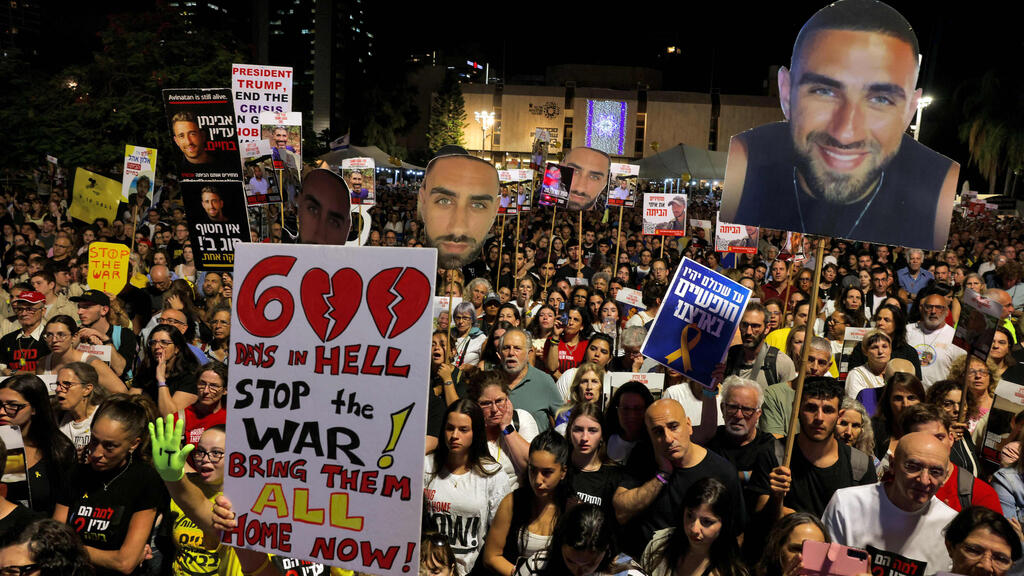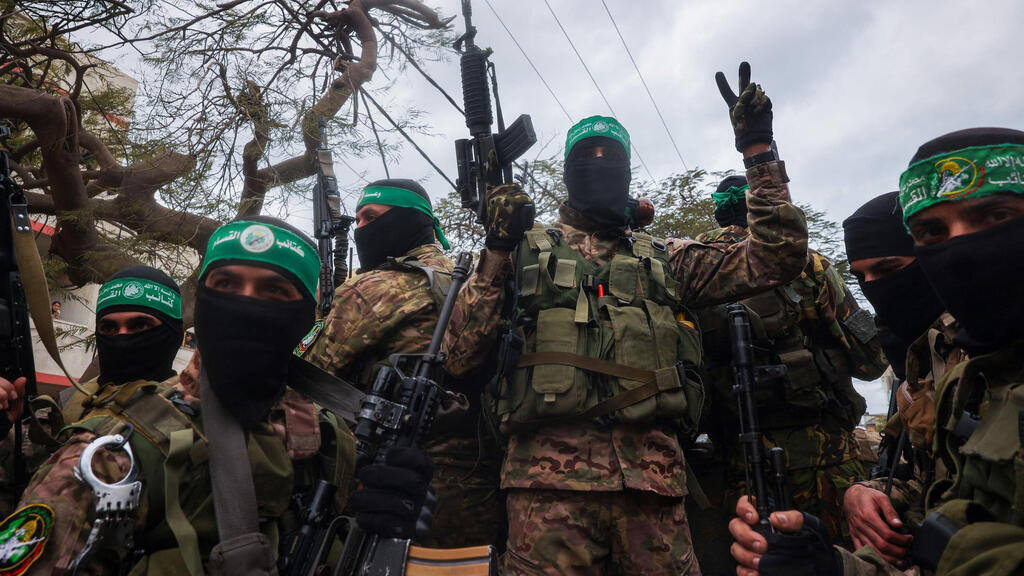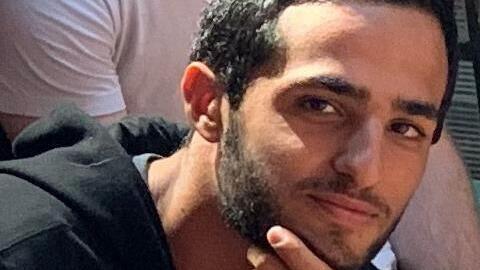While a ceasefire deal in the fighting in Gaza is said to be nearing an agreement, the families of the hostages who remain captive in the hands of Hamas, both those who were confirmed deal and those who are still alive, have been asking who would decide which of the hostages would be included in the pending deal.
This painful dilemma has been discussed at length among the families and officials since all those who are still alive, are thought to be in terrible condition after nearly two years as captives who are held tunnels, starved for food and clean drinking water, unable to bath and without the medical care that some of them are known to require. The families had urged one deal to end the war and bring everyone home.
3 View gallery


Families of hostages and their supporters demand one deal that brings all of the hostages home and ends the war
(Photo: Ahmad Gharabli / AFP)
Yehuda Cohen, whose son Nimrod is among the hostages believed to be alive told Ynet that different people have given different answers about who decides. "Some say it is Netanyahu, others a team of professionals and others, still say it is Hamas," he said. "I think it is a combination of all three. Officially, we know there is a team that made a list based on priorities," he said.
"Netanyahu cannot help but interfere. It is in his nature and Hamas will veto any name that they do not want to release. We are not delusional. We are realistic. Nimrod was taken in military uniform. He is young, was healthy and was not wounded."
Prime Minister Benjamin Netanyahu visited Nir Oz for the first time on Thursday, nearly two years after the massacre. He met with survivors, including Gadi Mozes, who was released from captivity after 482 days who had urged him in an earlier conversation to do what it takes to bring the hostages home.
It is clear that if the agreement goes forward, as it has been reported, then 10 live hostages would be included in the deal, while 10 others would not. Previous deals and the time that elapsed between them are proof. The last remaining hostages would be left to wait for the time when an end to the war could be agreed. Families of the hostages fear that it would mean a death sentence for their loved ones, who may be forgotten or disappear forever.
Get the Ynetnews app on your smartphone: Google Play: https://bit.ly/4eJ37pE | Apple App Store: https://bit.ly/3ZL7iNv
Officials are prepared to say very little about how the decisions on who would be included in the deal would be made and only point to a team of medical and intelligence experts who have been gathering information about the condition of each of the captives, so that they could provide informed advice to the government. Hamas had decided who and when hostages would be freed in the past.
Israel would attempt to have a say, however, in the decision on the hostages who would be freed in negotiations over Palestinian prisoners, approximately 1,000 of them, who would be included in the deal, including 100 who were sentenced to live in prison for their crimes.
Yehuda Cohen, whose son Nimrod is among the hostages believed to be alive told Ynet that different people have given different answers about who decides. "Some say it is Netanyahu, others a team of professionals and others, still say it is Hamas," he said. "I think it is a combination of all three. Officially we know there is a team that made a list based on priorities."




